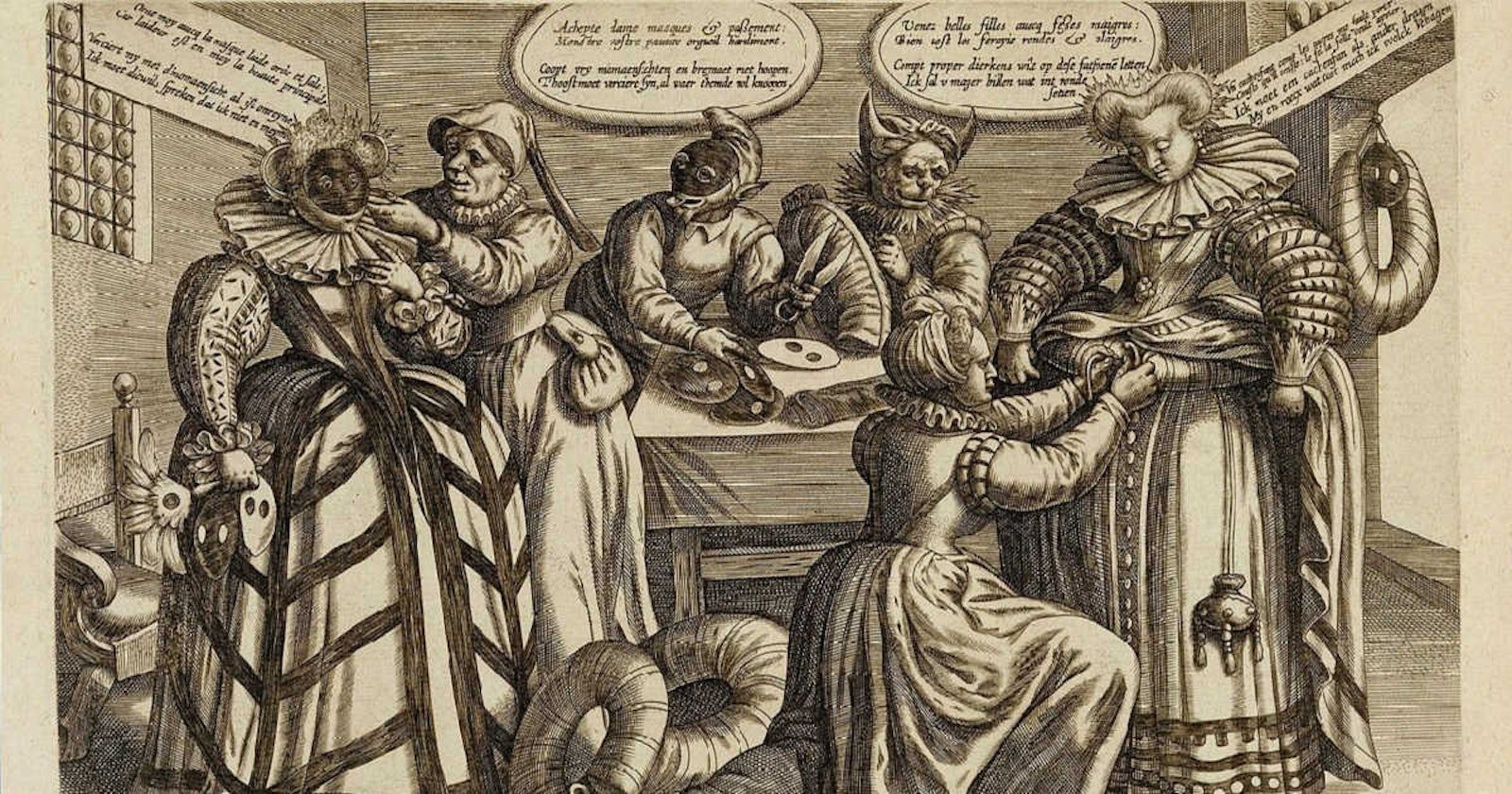Recently, while watching an ad for The Spanish Princess—a Starz miniseries based on Philippa Gregory’s book The Constant Princess—I was shocked by one of the costume choices. The young Catherine of Aragon in one scene is shown wearing a skirt with what appeared to be a cage over it. Naturally, as a lover of weird fashion history, I had to find out whether this skirt was based on real fashion or was dreamed up by a modern costume designer. As I dug around, I learned about the farthingale, a once-popular piece of costuming worn by European ladies of distinction for many years.
The name farthingale is a corrupted version of the Spanish name for the garment, verdugado—which is appropriate, given that Catherine of Aragon is credited with bringing the farthingale to England when she came over to marry Arthur, Prince of Wales. (She was also credited, wrongly, with introducing blackwork embroidery. While she didn’t introduce blackwork to the country, she did introduce the Spanish style, which you can read about in the July/August 2014 issue of Piecework.) The farthingale is, essentially, the precursor of the crinoline. Farthingales were skirts that had stiff hoops sewn to them to give a skirt volume. The hoops were made of stiffened rope, cane, and, later, whalebone. We find the first mentions of them in the late fifteenth century, and by the sixteenth century, they were a must-have piece of fashion for Spanish noblewomen.
This detail of a retablo by Pedro García de Benabarra depicts Herod’s banquet. Several women are seen wearing farthingales. Note that none of the farthingale skirts resemble a cage.
A farthingale could be worn several ways. First, it could be worn under a skirt (just as a crinoline could be), it could be worn as a visible underskirt, or it could be part of a dress itself. Does that mean Catherine of Aragon wore the cage skirt shown in The Spanish Princess? Not very likely. In early-sixteenth-century paintings with visible farthingales, the garments were highly decorated. The rope or cane was covered in beautiful fabric. To the modern eye, these dresses look like beautiful skirts that just happen to have rings around them. Based on my research, the cage skirt appears to be a modern invention.
Over time, visible farthingales became no longer the norm, and the cage farthingales were eventually replaced in popularity by the rolled French farthingale shown in the header, which was a bit like a donut worn on the hips. Also, in case anyone is wondering, to my knowledge the farthingale did not appear to have the same level of danger associated with it as the more modern crinoline. Perhaps this is because they were smaller, but I’m guessing it’s because they were exclusively worn by upper-class women who were much less likely to be in dangerous situations than their less economically advantaged counterparts.
Happy Weaving!
Christina
Published 07/02/2019 Revised 10/31/2022


